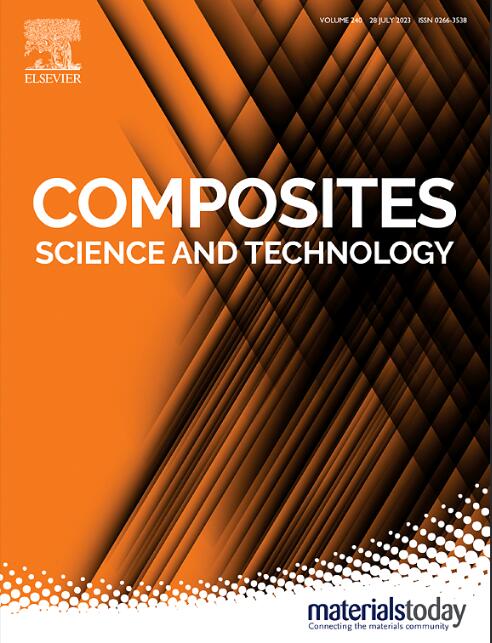Macrocycle-based host-guest interactions improving electrical energy storage capability of all-organic dielectric composites
IF 8.3
1区 材料科学
Q1 MATERIALS SCIENCE, COMPOSITES
引用次数: 0
Abstract
Polymer films capacitors are widely used in the electrical and electronic fields, and much effort has been devoted to exploiting the high temperature resistant polymer dielectrics with superior discharged energy density (Ud) and efficiency (η) in harsh environments. The addition of organic molecular fillers is good way to improve the energy storage properties of dielectric polymers. In this work, for the first time, the host organic filler (methyl β-cyclodextrin, M-β-CD) is embedded into the guested polynorbornene dielectrics containing amantadine side-chain (PATMD). All-organic polymeric dielectric composites (M-β-CD/PATMD) is obtained based on the host-guest interaction between PATMD matrix and M-β-CD filler. The experiment results showed that the introduction of host filler can obviously enhance the Ud and η at high temperature and high field because inclusion complex can simultaneously increase thermal performance and trap depth. The maximum Ud of 0.1 wt% M-β-CD/PATMD is 7.4 J/cm2, maintaining the η of above 90 %. Importantly, at 150 °C and 200 °C, the largest Ud of 4.3 J/cm2 and 3.6 J/cm2 is achieved respectively, and the corresponding η is 80 % and 74 %, which is both much higher than that of pure PATMD. This work proves that the cyclodextrin-based host-guest design method is a good effective strategy for the preparation of high performance polymer dielectrics.

基于大循环的主客体相互作用提高了全有机介电复合材料的储能性能
聚合物薄膜电容器广泛应用于电气和电子领域,在恶劣环境下具有优异的放电能量密度(Ud)和效率(η)的耐高温聚合物介质的开发一直是人们努力的方向。添加有机分子填料是提高介电聚合物储能性能的有效途径。本研究首次将宿主有机填料(甲基β-环糊精,M-β-CD)嵌入到含有金刚烷胺侧链(PATMD)的聚降冰片烯介电体中。利用PATMD基体与M-β-CD填料之间的主客体相互作用,制备了M-β-CD/PATMD全有机聚合物介电复合材料。实验结果表明,在高温高场条件下,引入主填料可以明显提高合金的Ud和η值,这是由于夹杂物可以同时提高合金的热性能和陷阱深度。0.1 wt% M-β-CD/PATMD的最大Ud为7.4 J/cm2, η保持在90%以上。重要的是,在150°C和200°C时,最大Ud分别为4.3 J/cm2和3.6 J/cm2, η分别为80%和74%,远高于纯PATMD。本研究证明了基于环糊精的主客体设计方法是制备高性能聚合物介电体的有效策略。
本文章由计算机程序翻译,如有差异,请以英文原文为准。
求助全文
约1分钟内获得全文
求助全文
来源期刊

Composites Science and Technology
工程技术-材料科学:复合
CiteScore
16.20
自引率
9.90%
发文量
611
审稿时长
33 days
期刊介绍:
Composites Science and Technology publishes refereed original articles on the fundamental and applied science of engineering composites. The focus of this journal is on polymeric matrix composites with reinforcements/fillers ranging from nano- to macro-scale. CSTE encourages manuscripts reporting unique, innovative contributions to the physics, chemistry, materials science and applied mechanics aspects of advanced composites.
Besides traditional fiber reinforced composites, novel composites with significant potential for engineering applications are encouraged.
 求助内容:
求助内容: 应助结果提醒方式:
应助结果提醒方式:


